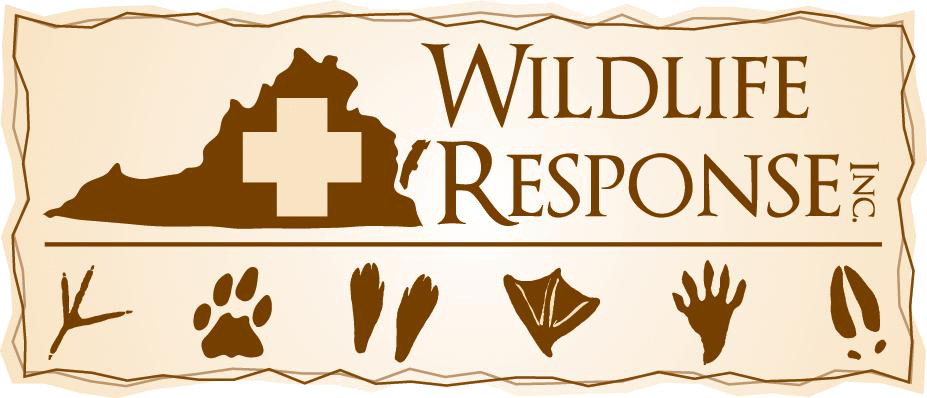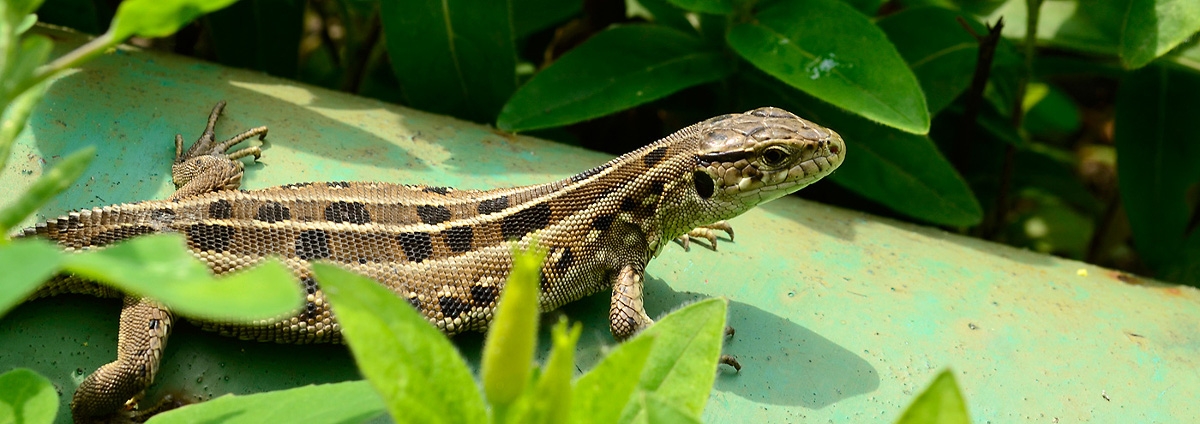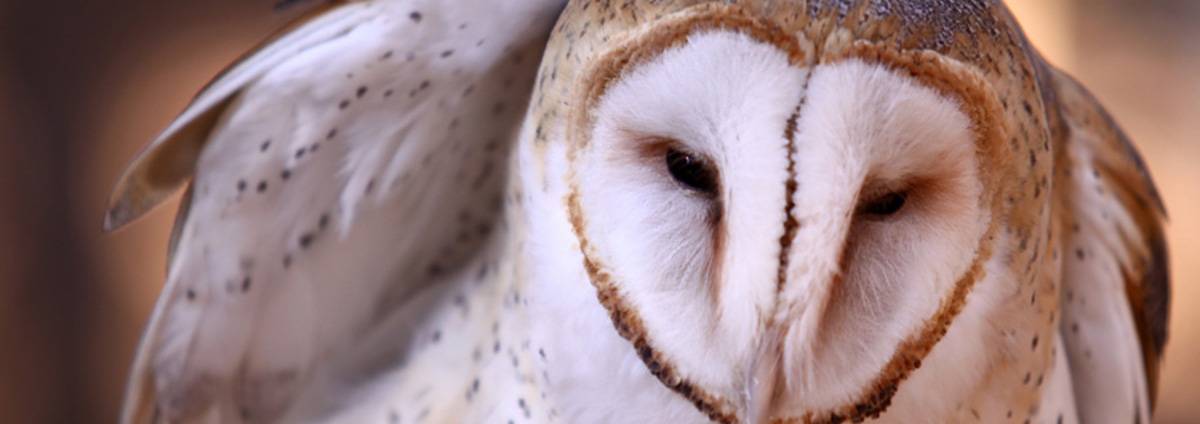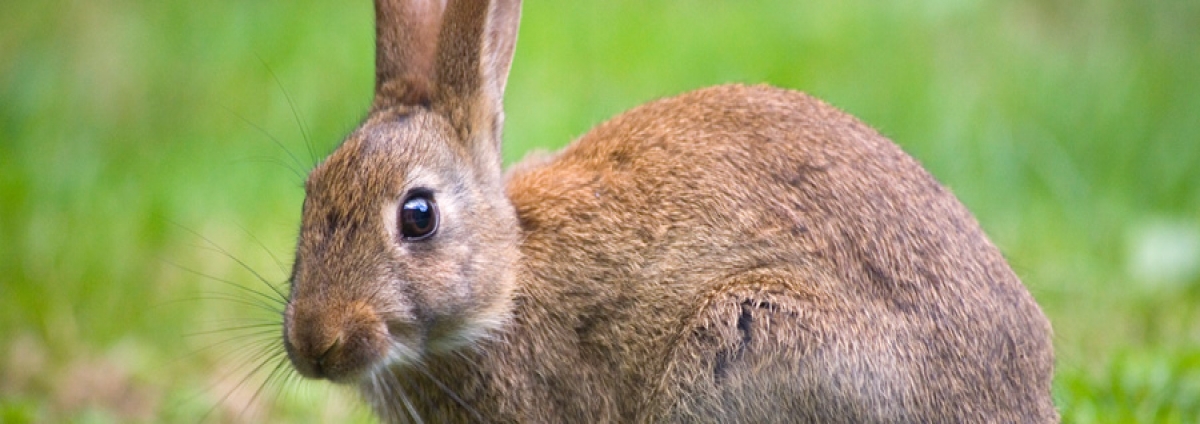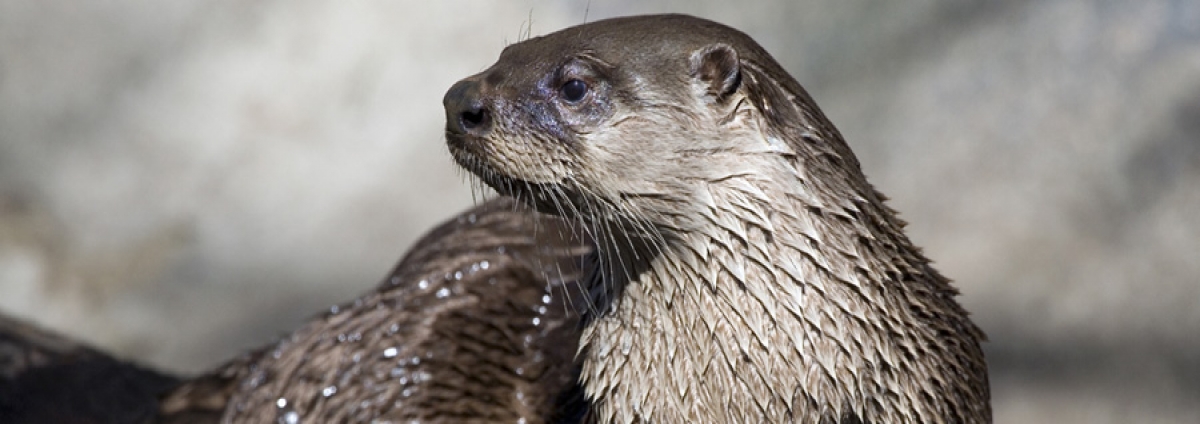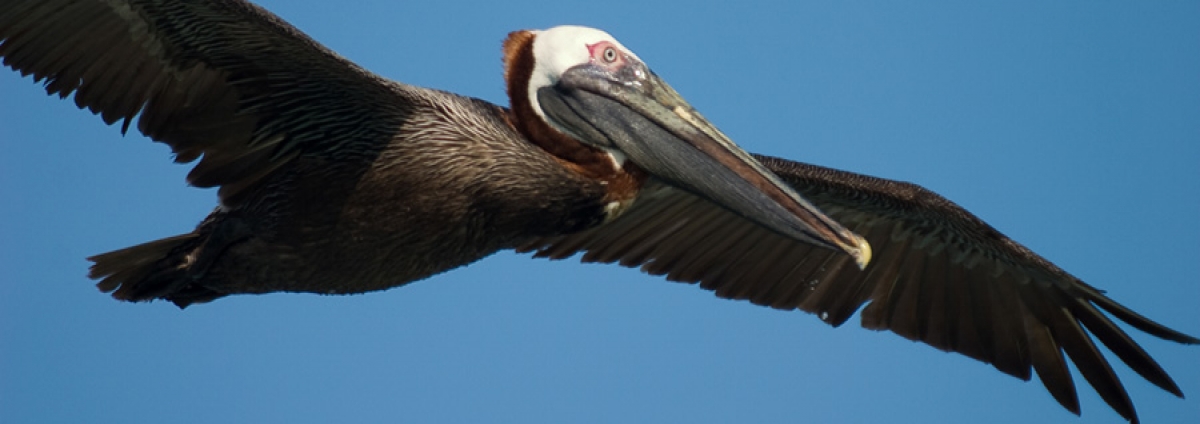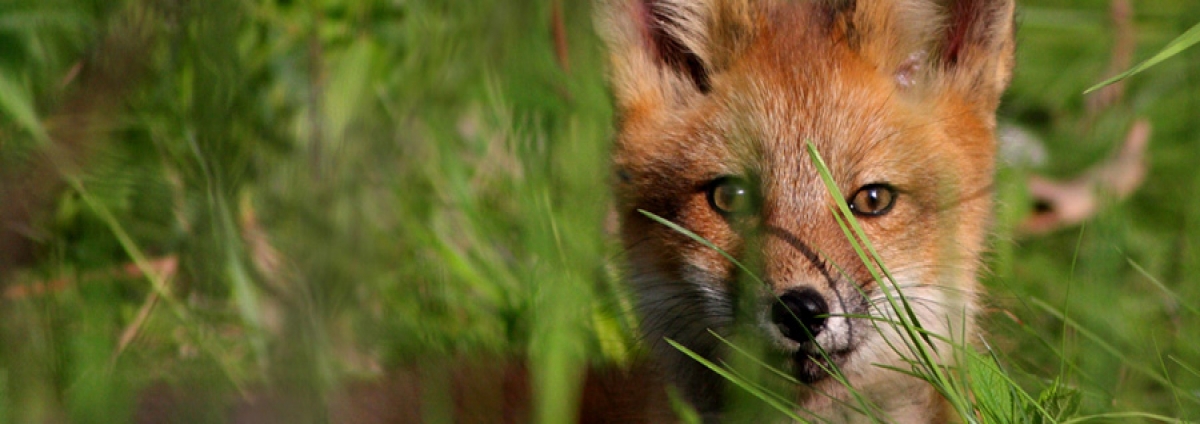Wildlife Response, Inc. is a distinctive 501c3 volunteer organization devoted solely to the care of orphaned, injured, and displaced native wildlife. We are dedicated to increasing awareness of wildlife rehabilitation to the public. Our organization depends primarily upon the private donations for its programs and services.
The Wildlife Response and Rehabilitation Center will be a centrally located facility where citizens, animal control officers and other agencies can drop off wildlife. In addition, the Center will provide a redistribution center for animals to be triaged, and then sent to permitted-based wildlife rehabilitators for care. The Center is expected to open in 2025.
Mammals
White-Tail Deer
(Odocoileus virginianus)
 White-tailed deer have played a very important role in the history of our country. A major part of Meriwether Lewi’s job was to observe and descried the flora and fauna of the Northwest. He had no reason to write about the common or fallow deer of the East Coast, except for eusing it for comparison purposes, he gave it a very good picture overall. The term “white-tail” occurred in the expedition’s journals only once, when Clark, on June 5, 1805, reported that he “Saw great numbers of Elk & white tail deer.” He was merely using it as a descriptor, not as a name. It didn’t come into popular usage until sometime in the 1860s.
White-tailed deer have played a very important role in the history of our country. A major part of Meriwether Lewi’s job was to observe and descried the flora and fauna of the Northwest. He had no reason to write about the common or fallow deer of the East Coast, except for eusing it for comparison purposes, he gave it a very good picture overall. The term “white-tail” occurred in the expedition’s journals only once, when Clark, on June 5, 1805, reported that he “Saw great numbers of Elk & white tail deer.” He was merely using it as a descriptor, not as a name. It didn’t come into popular usage until sometime in the 1860s.
They were used extensively by Native Americans for both food and clothing and also by the early settlers.
White-tailed deer are the smallest of the three members of the deer family found in North America, the others being elk and moose.
The white-tailed deer is the oldest species of deer in the world today, its first appearance dating back to the Pliocene, perhaps 3.5 million years ago. There are now 38 subspecies of the white tail occupying a range that extends from the jungles of northern South America to the fringes of Canada’s boreal forests, and from the Atlantic Coast to the Pacific Northwest.
 “White-tailed” refers to the distinctive white tail that when raised provides a flash of white signaling other deer when danger is near. They are graceful and swift runners that can reach up to 35 mph. Male deer are called “bucks”, females “does”, and baby deer “fawn”. They live in female-led family groups of up to 25 deer and can live as long as 10 years or more. Buck deer are primarily solitary animals except during the breeding season (also called the “rut”).
“White-tailed” refers to the distinctive white tail that when raised provides a flash of white signaling other deer when danger is near. They are graceful and swift runners that can reach up to 35 mph. Male deer are called “bucks”, females “does”, and baby deer “fawn”. They live in female-led family groups of up to 25 deer and can live as long as 10 years or more. Buck deer are primarily solitary animals except during the breeding season (also called the “rut”).
They have two seasonal coats. In the spring/summer their coat is reddish tan, relatively short, with thin and wiry hair. The winter coat is grayish or bluish tan with heavy, long hairs with a thick coat. White patches are found around the eyes, throat belly, inside of legs and underside of the tail. The fawns have white spots in a reddish-brown background enabling them to blend in with their surroundings. In the later part of the summer the fawn starts to loose it’s spots and they get a grayish coat. They are active around the clock, but less so during the daylight hours. They are usually on the move during the dawn and dusk. Deer have been recorded leaping heights of as much as eight (8) feet to clear a fence or barrier. We have identified at least 13 different sounds that they make for various activities and behaviors. Antlers play an important role in deer society. Rubbing the antlers on trees marks territories and sparring matches.
 White-tailed deer prefer an area with diverse food and cover types. The perfect habitat would include a mixture of forest, brushland, cropland and fields. They eat a variety of items; some of the items are: wild crabapple, corn, sumac, Japanese honeysuckle, grasses, greenbriar, clover soybeans, jewelweed, acorns, and not limited to dogwoods.
White-tailed deer prefer an area with diverse food and cover types. The perfect habitat would include a mixture of forest, brushland, cropland and fields. They eat a variety of items; some of the items are: wild crabapple, corn, sumac, Japanese honeysuckle, grasses, greenbriar, clover soybeans, jewelweed, acorns, and not limited to dogwoods.
 When born male fawns weigh about 4-14 pounds and femails 3-8 pounds. They are born with their eyes open and can walk within 1-2 hours. Fawns nurse 2-3 times a day. They come out of hiding to nurse then go back into hiding. At about one month the fawn begins to accompany their mother. They will stay together until the following spring. Female fawns will remain in proximity to their mother their whole life. The bucks are forced to leave in the fall, if they haven’t already.
When born male fawns weigh about 4-14 pounds and femails 3-8 pounds. They are born with their eyes open and can walk within 1-2 hours. Fawns nurse 2-3 times a day. They come out of hiding to nurse then go back into hiding. At about one month the fawn begins to accompany their mother. They will stay together until the following spring. Female fawns will remain in proximity to their mother their whole life. The bucks are forced to leave in the fall, if they haven’t already.
North American River Otter
(Lutra Canadensis)
 The North American river otter is the most numerous of the otter species. Otters are found throughout nearly all of Canada, Alaska and the continental United States with the exception of arctic regions and a small portion of the southwest United States. As polluted waterways have become cleaner, otters have returned.
The North American river otter is the most numerous of the otter species. Otters are found throughout nearly all of Canada, Alaska and the continental United States with the exception of arctic regions and a small portion of the southwest United States. As polluted waterways have become cleaner, otters have returned.
Otters are considered a semi-aquatic mammal. They are mostly seen in or near the water but are quite capable of overland travel, if the spirit moves them.
They are members of the weasel family, the “Mustelidas”. The first recognizable aquatic otter fossil dates to 30 million years ago. A species known as “Pakalutra jaegeri” lived in Europe 25 million years ago and may be the ancestor to the modern river otter. My rehabilitation work with the river otter has led me to describe them as trying to control the energizer bunny with the intelligence of a two year old, the strength of an ox, the teeth of a piranha and the temperament of a killer bee. Working with them is both challenging and rewarding.
The typical adult weighs between 11 and 22 pounds, and can measure 3 to 4 feet in length. They stand 10” at the shoulder. They have long, supple bodies that are extremely muscular. They are able to twist, turn, roll and dive effortlessly through the water. The eyes have a clear, third eyelid, nictating membrane, which covers the eye when swimming.
The otter’s feet are strong, well-webbed, and clawed. Otters can reach speeds of 7 mph under water and can dive to depths of 35 feet or more. They are capable of holding their breath 3 to 8 minutes. On land, they are capable of running up to 18 mph. The ears are small and lie flat against the head. The tail is furred and is long and rudder-like.
The fur is velvety in feel and thick. The color ranges from nearly black to reddish or grayish brown. Belly fur is lighter, usually silvery or grayish brown. The throat and cheeks are silvery to yellowish gray but are not clearly distinguished. The nose is diamond shaped.
 The long whiskers are used to detect prey in the substrate. Prey is eaten immediately after capture. River otters are extremely agile and highly intelligent. They are one of the few animals that seem to spend much of their time playing. They delight in making a game of everything. They will chase after a pebble or shell or each other for hours. They make a game of sliding down a slope and belly flopping in the water.
The long whiskers are used to detect prey in the substrate. Prey is eaten immediately after capture. River otters are extremely agile and highly intelligent. They are one of the few animals that seem to spend much of their time playing. They delight in making a game of everything. They will chase after a pebble or shell or each other for hours. They make a game of sliding down a slope and belly flopping in the water.
Otters often share territory with beavers. They are found in a variety of freshwater habitats, including streams, rivers, lakes, marshes and ponds. Otter dens are often dug into banks, but they will also use an old beaver lodge, muskrat den, or hollow log. They are most active at night. Otters will feed on fish, snakes, turtles, frogs, crayfish and almost anything they can catch. Research shows that otters feed on slow-moving fish such as suckers and catfish. They tend to eat the “trash” fish that compete with the more economically beneficial fish. Mating takes place shortly after the birth of pups, but otters have delayed implantation, allowing actual gestation to begin months later. Females give birth to 2-4 pups in early spring. They are born blind and toothless. The pups are helpless the first two months of life and remain in the den. Otter pups are weaned between 3 and 4 months. When the otter pups are weaned, father sometimes joins the female to help raise the pups. Mother begins swimming lessons after the pups are 2 months old. The average life span of river otters in the wild is 10-20 years. Captive otters have reached an age of 23.
River otters are usually found alone or in pairs, but will sometimes socialize in larger groups. “Play” activities are used to strengthen social bonds, practice hunting techniques, and to scent mark. They have boundless energy and an extremely high metabolism which requires them to eat a great deal. Their home ranges are large and they may be up to 20 square miles. Individual males may travel 25 miles in a week patrolling the borders of their range and scent marking.
 River otters communicate through a wide range of activities and sounds. They vocalize with whistles, growls, grunts, chuckles, chirps and screams.
River otters communicate through a wide range of activities and sounds. They vocalize with whistles, growls, grunts, chuckles, chirps and screams.
They scent mark by urinating/defecating within their home range. The scent glands, located at the base of the tail produce a strong, musky odor.
River otters have no real predators. Other predators find them difficult to catch, due in part to their agility in the water. Otters are fierce fighters, but will occasionally fall prey to coyotes. Today, all otter species are considered threatened. Water pollution and excessive fur trapping are their biggest threats.
River otters pose little threat to humans or structures.
Virginia Opossum
(Didelphis Virginia)
 The Virginia Opossum is literally a living fossil. Its basic skeleton has remained unchanged for the last 90 million years. Its ancestors lived in the time of dinosaurs. The present day possum evolved into its present form around 75,000 years ago. The word opossum comes from the Algonquian Indian word “apasum”, which means “white mammal”. In 1612, Captain John Smith sent word to England that, “An opossum hat a head like a swine, and a tail like a rat and the Bignes of a cat”.
The Virginia Opossum is literally a living fossil. Its basic skeleton has remained unchanged for the last 90 million years. Its ancestors lived in the time of dinosaurs. The present day possum evolved into its present form around 75,000 years ago. The word opossum comes from the Algonquian Indian word “apasum”, which means “white mammal”. In 1612, Captain John Smith sent word to England that, “An opossum hat a head like a swine, and a tail like a rat and the Bignes of a cat”.
The opossum is a unique species among our North American mammals. It is the only marsupial. Females have a pouch or “marsuprin”. It is found in most of the lower 48 states, as well as the southern part of some Canadian provinces. It is a medium- sized animal. The average adult weighs between 12 and 13 pounds. They continue to grow throughout their short life. The fur color ranges from white to almost black, but usually appears gray. Long guard hairs give the fur a coarse appearance. The ears and tail have no hair. The possum’s tail is its most notable feature. It is a myth that they hang by their tail. They will wrap their prehensile tail around branches to brace themselves or steady their position. They will carry nesting material with their tail, curling it around the matter they wish to carry. They are able to grasp branches and food easily due to the unique structure of their feet. Four of their toes have sharp claws, but the fifth, the big toe, lacks a nail and is opposable, like the human thumb. This allows the opossum to have extreme dexterity.The opossum has a relatively small brain for its size but this has not inhibited its ability to adapt to a variety of environments and climates. They catch on quickly to a reliable food source. They have a well developed sense of smell, which aids in food location. The opossum is a true omnivore. They will eat virtually everything. Their diet encompasses an extraordinarily diverse range of items. They will eat fruit, bird’s eggs, mice, insects, slug, snails, earthworms, nuts, mushrooms, grain crops, snakes, garbage, lizards and carrion. Raids to chicken houses and gardens are rare. Young opossums do not have to be taught to find food. The sight of live, moving food excites them to capture, kill and eat. They are nocturnal, solitary scavengers that do not hibernate.
 For its size , the opossum is the shortest- lived mammal. Other mammals its size frequently live for 10 years or more. Opossums almost never live more than 2 years. Most fail to reach the age of two. The opossum does have natural enemies but the major cause of possum mortality is the automobile, which may be due in part to the possum’s attraction to road kill. The opossum is still hunted for its meat and fur. Owls, snakes, coyotes and dogs also take their toll.
For its size , the opossum is the shortest- lived mammal. Other mammals its size frequently live for 10 years or more. Opossums almost never live more than 2 years. Most fail to reach the age of two. The opossum does have natural enemies but the major cause of possum mortality is the automobile, which may be due in part to the possum’s attraction to road kill. The opossum is still hunted for its meat and fur. Owls, snakes, coyotes and dogs also take their toll.
The opossum is best known for “playing possum”. When a possum is threatened, it will first show it’s teeth and hiss similar to an angry cat. If that fails to scare off the predator, the possum may run away or climb a tree. As a last resort, the possum will “play possum”. It will curl up in a trancelike state, body limp, eyes open and sometimes tongue hanging out. It is not a conscious act of pretending but is a genetically programmed response. Even after the threat has passed, the possum may remain in this state for minutes up to hours.
The survival of the opossum may be due in part to their reproduction. The female will often raise two litters in a year. Each litter may contain a dozen babies. Mothers often succeed in raising half of them. Females are able to reproduce as early as age 6 months. The combination of early reproduction and large litters has insured the possums survival. As with all marsupials, possum young are born in the embryonic state. The newborns are about the size of a honey bee. An entire litter may fit in a tablespoon. After birth, they must crawl up into the mother’s pouch, where they will remain and nurse for about 2 months. This is an extremely important evolutionary development. The mother never has to return to a den to feed her young. She can continue her wandering lifestyle to find food and sleep where she likes.
 Between two and three months, the young possums will emerge from the pouch. For a few days, they will remain in a den while mother searches for food. After a few days they begin to wander with mother or ride on her back. As their fifty teeth develop, they will wean from their mothers , begin to eat the diverse diet of the possum and become the solitary scavenger they are meant to be.
Between two and three months, the young possums will emerge from the pouch. For a few days, they will remain in a den while mother searches for food. After a few days they begin to wander with mother or ride on her back. As their fifty teeth develop, they will wean from their mothers , begin to eat the diverse diet of the possum and become the solitary scavenger they are meant to be.
Racoon
(Procyon Lotor)
 Raccoons are found throughout the continental United States. The North American raccoon fossil evidence dates its existence to two million years ago. The name “procyon” is from a Greek word meaning dog and the “lotor” from the latin word meaning “the washer”. The name raccoon is derived from the Algonquin Indian word “arakinem” meaning “he scratches with his hands”. The back mask and ringed tail makes the raccoon distinctive among the other mammals of North America. The northern raccoons tend to have darker fur color than their southern cousins. The raccoons living in salt water marshes tend to have a redder shade to their fur. Adult weights average 12 to 18 pounds but a top weight of 30 pounds is possible.
Raccoons are found throughout the continental United States. The North American raccoon fossil evidence dates its existence to two million years ago. The name “procyon” is from a Greek word meaning dog and the “lotor” from the latin word meaning “the washer”. The name raccoon is derived from the Algonquin Indian word “arakinem” meaning “he scratches with his hands”. The back mask and ringed tail makes the raccoon distinctive among the other mammals of North America. The northern raccoons tend to have darker fur color than their southern cousins. The raccoons living in salt water marshes tend to have a redder shade to their fur. Adult weights average 12 to 18 pounds but a top weight of 30 pounds is possible.
A raccoon’s feet are naked on the soles with five toes. Its sense of touch is acute. The front paws are believed to be four times as sensitive as the back feet. They have well developed dexterity and are able to open many different types of containers. The “washing” behavior of a raccoon more accurately reflects a need to tactually experience things. The cat-like claws make the raccoon an excellent climber.
Both senses of hearing and vision are keen. Their vision is adapted to its nocturnal activities. They are most likely color blind and reflect light as a greenish glow.
Raccoon language ranges from the chirring, trilling and purring of the young to the scream, snarls and growls of the adult.
Raccoons are good swimmers, but avoid deep water unless necessary to escape danger.
Raccoons are very curious. Young raccoons pick up things constantly and put them in their mouths. They actively learn what is edible. Due to their intelligence and adaptability, they are found in a wide variety of habitats in rural and urban areas.
They are at least as intelligent as dogs and cats. They prefer mature woodlands. Urban areas provide both natural foods and abundant cast offs from human tables. Shelter can be found in uncapped chimneys, attics, under porches and yard buildings. Cities provide extensive travel corridors for the clever raccoon willing to use the dry storm drains.
 In the spring, a pregnant female will select a birthing den only days before the babies arrive. Liter size ranges from two to seven. The babies are called cubs. They will remain with their mother until fall. Raccoons are not territorial. They tolerate each other by avoidance. Occasionally cubs will remain with their mother for the winter but most often it is the cubs that will den together for the first winter. The average life span of a raccoon is 7 years.
In the spring, a pregnant female will select a birthing den only days before the babies arrive. Liter size ranges from two to seven. The babies are called cubs. They will remain with their mother until fall. Raccoons are not territorial. They tolerate each other by avoidance. Occasionally cubs will remain with their mother for the winter but most often it is the cubs that will den together for the first winter. The average life span of a raccoon is 7 years.
A raccoons diet varies. They will eat fruits, vegetables, acorns, earthworms, small mammals, such as mice, birds, eggs and amphibians . Those living near water will eat fish and aquatic animals. They are not regarded as effective or efficient hunters. Their fondness for grapes and sweet corn sometimes leads to conflicts with humans. Raccoons will add 30% to their body weight before winter. They do not hibernate, so the fat reserves will benefit their survival. On extremely cold days or bad weather they will remain in a state of topor for several days.
The raccoon is one of four animals, including bat, fox and skunk, that are considered to be a primary carrier of rabies in the United States. Raccoon rabies was documented in Virginia and West Virginia for the first time in 1977, after a group of wild raccoons were brought from Florida to repopulate a hunting area. Exposure to rabies is defined as an animal bite, scratch or contamination of mucous membranes or unintact skin by saliva or nervous tissue. The incubation period can range from 9 days to over one year. This disease can have a variety of signs. The “furious” form of the disease will cause affected animals to attack non-prey species, such as, pets, people and livestock. The “dumb” form will cause an animal to have a staring expression and appear very lethargic. Paralysis and convulsions can occur in either form of the disease. Raccoons can also carry a round worm called “baylisascaris procyonis” that can infect humans if eggs are ingested or inhaled from dry feces.
(reprinted with permission from Wild at Heart)
Mink and Weasel Family
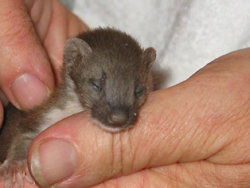 The American Mink (mustela vision) is a member of the family of animals known as mustelids. The mustelid family is known for their feistiness and are often described as fearless. The common name for mink comes from the Swedish word maenk.
The American Mink (mustela vision) is a member of the family of animals known as mustelids. The mustelid family is known for their feistiness and are often described as fearless. The common name for mink comes from the Swedish word maenk.
Mink are born both curious and secretive. They are usually shy but can be very bold when their curiosity has been aroused. They are solitary with the exception of mating season.
The American mink shares the common characteristic of all mustelids: anal musk glands that are used for territory marking and defense. As members of the weasel family, their bodies are long and slender with long necks and short legs. Mink range in size from 12 to 17 inches in length. Males are larger than females. Females range in weight from 1 ¼ to 2 pounds. Males range in weight from 1 ½ to 3 pounds.
The fur is a rich dark brown to almost black with a white chin patch and throat. Sometimes they have small white spots on their belly. The fur is soft and thick with oily guard hairs that waterproof the coat. A mink’s pelt has a thick under-fur for insulation and buoyancy. The tail is fully furred and slightly bushy. The eyes appear black and are beady in appearance. They have fair eyesight and must rely on their sense of smell to locate prey. A mink’s ears are short, barely extending above its fur. The feet have five toes which are slightly webbed, making mink excellent swimmers. They use all four feet when swimming and are able to dive as deep as 16 feet. They are capable of swimming underwater distances of 50 feet. Mink can reach a top surface swimming speed of 1 to 1 ½ miles per hour. On land, they usually walk or take low bounds covering a distance of between 10-24 inches with each bound. They are capable of running 7-8 miles per hour.
They will often rear up on their hind legs to get a better view of their surroundings, and will sometimes climb trees to avoid predators. They will spray a foul smelling liquid when frightened and may squeal, snarl, or hiss. They can make a purring sound when happy and will greet with a bark.
Mating takes place between January and March. Females may breed their first year. The average life span is one year but they may live as long as 4 years. Litters of 2-6 are born blind, naked and helpless. Eyes open around 212-25 days.
Abandoned burrows dug by muskrat are a favorite place to rest and raise their young. They will also use cavities in brush and rock piles, logjams, and the exposed roots of trees. A den can have several entrances, and includes a nest chamber about 1 foot in diameter. The female usually lines this chamber with grass, leaves, fur or feathers. Mother begins to wean at 5 weeks by bringing home food. Young mink have a surplus of skin at the back of the neck, which protects them from mother’s sharp teeth when she picks them up. By 8 weeks, the weaning process is over and the young mink begin traveling with their mother on hunting trips. Young mink are playful and begin to play fight. They will travel in single file and will mimic mother’s behaviors. They remain with their mother until the end of summer. As fall approaches, the young mink will leave to establish their own territory. The larger males disperse first and the females may not disperse until the following spring. The young mink may establish territory as far away as ten miles. By the age of ten months they are able to mate. Females reach their full growth by the following fall but males continue to grow into their second year.
Mink prefer a habitat beside streams and lakes. They are chiefly nocturnal and very secretive. They are rarely seen by humans and are solitary except for family groups of mothers and young. Mink are almost as dependent on access to water as the river otter. The mink will have a narrow territory not more than 150-300 feet from a lake , stream, marsh or river bank. A permanent water source, reliable amount of prey and adequate shoreline vegetation , such as cattails, are important to a mink’s choice of habitat. A male mink travels widely and may occupy as much as 2.5 miles of stream habitat or 2500 acres in wetland habitat. An adult female does not travel as far as the male. Her territory covers about 1 mile of stream habitat and 40 acres of wetland habitat. Males defend their territory against other males. A male may use several different dens within its range. The female usually only has one or two dens and is the only one to use them. Juveniles that have recently left the family group often use several dens until they establish their own territory. There is usually 1 mink for each 50 acres of wetlands and 3-4 mink for each mile of stream habitat, when food is ample. Wild mink are less common than 50 years ago due to habitat loss caused by development, stream channelization and drainage of wetlands. Mink mark their territory and advertise their presence by depositing their droppings and leaving its scent in prominent spots, such as rocks or logs. Mink are active year round, remaining in the den only during severe winter weather.
Despite their size, mink are vicious predators. The mink is extremely aggressive and capable of attacking and killing animals much larger than itself. They are seldom if ever interested in plant food. They feed primarily on birds, eggs, frogs, crayfish, and fish. They seldom eat insects or carrion. The males, being larger in size, will also prey on rabbits, large birds, and muskrat. Prey are usually killed and taken to the den to eat. Mink perform a valuable service to man by controlling the small rodent population. It will cache food for later if the prey is larger than it can eat at one time.
Mink are preyed on by owls, fox, coyotes, bob cats and domestic dogs and cats. Other reasons for mortality include fighting with other mink, starvation of dispersing juveniles and trapping.
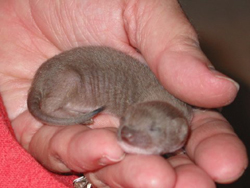 Mink are excellent environmental indicators. Wild mink are subject to a bio-accumulation of dangerous chemicals, such as mercury, because they are at the top of the aquatic food chain. The Illinois Environmental Protection Agency found that the study of mink caught by trappers, was an important addition to water quality tests. The water samples did not always provide a complete picture of how compounds accumulate through the food chain or affect wildlife when they interact with each other in an animal’s body. Through this study, people were warned not to consume fish in certain areas due to the high levels of mercury found in the mink’s system. Mink are also susceptible to Aleutian mink disease virus, a form of the parvovirus.
Mink are excellent environmental indicators. Wild mink are subject to a bio-accumulation of dangerous chemicals, such as mercury, because they are at the top of the aquatic food chain. The Illinois Environmental Protection Agency found that the study of mink caught by trappers, was an important addition to water quality tests. The water samples did not always provide a complete picture of how compounds accumulate through the food chain or affect wildlife when they interact with each other in an animal’s body. Through this study, people were warned not to consume fish in certain areas due to the high levels of mercury found in the mink’s system. Mink are also susceptible to Aleutian mink disease virus, a form of the parvovirus.
The long tail weasel (mustela frenata) belongs to the Mustelidae family and the order Carnivora. Fossils of weasel ancestors are at least 40 million years old. The long tail weasel is solitary and secretive in nature and is found throughout most of the continental United States with the exception of Alaska. The long tail weasel requires a constant supply of drinking water.
Unlike most other predatory animals, weasels are active both day and night. Evidence suggests that they are better suited to hunting during the day, especially twilight. They are efficient predators and active year round. A weasel’s eyes have a reflective layer of tissue called the tapetum lucidum behind the retina to improve night vision. In the tracks of a weasel, the hind feet and front feet are superimposed . As a result, the tracks look like they were made by two feet instead of four. They have furred foot pads which allow for quickly running over snow. Weasels, like all mustelids, produce a pungent odor called “musk”. When irritated they will discharge their musk as a defense strategy. The long tail weasel has a long, slender body and neck, short legs and a tail, that measures 40-70% of its body length. The upper body fur is brown and the under parts are yellowish white. The long tail weasel has brown feet in summer, where the other members of the weasel family have white feet. The mature long tail weasel has a black tip at the end of the tail. A study was done by a researcher named Roger Powell on the purpose of the black tip. In this study, he trained captive hawks to capture fake weasels. The hawks repeated focused on trying to capture the black tip, with little success. When the fake weasels were replaced with like weasels without the black tip, the hawks were more successful by attacking the body. Powell, concluded that the black tip is a natural diversion to elude predators.
Adult males weigh 7 ½ to 12 ounces and females usually weigh 3 ¼ to 7 ½ ounces. Adult males are 12 ½ to 20 inches in length, with a tail length possible of 6 inches. Females are by contrast only 10-16 1/8 inches in length and maximum tail lengths of 5 ½ inches.
Long tail weasels feed primarily on insects and small rodents, such as voles, moles and mice They may consume up to 4 rodents per day.. However, their diet may also include bird and birds eggs. As predators, they play an important role in the ecosystem. They have a high metabolic rate, which must be constantly sustained. They have a heart rate in the hundreds of beats per minute. It takes a lot of fuel to stoke its hyperactive energy level. A weasel consumes its weight in food every day. It will eat 5 to 10 times daily. This need for constant food has contributed to the notion of them as cold blooded killers They are capable of killing prey up 5 times their size, such as muskrats, water fowl, squirrels and cottontail rabbits. A weasel can run carrying prey twice its own weight. In relation to body size, a weasel is stronger than a lion, which is unable to run with prey half its body weight. They hunt by moving around the area where the prey live. Their thin, small body allows them to squeeze into the tunnels of small rodents. They use all their senses to hunt. They kill their prey by biting the neck at the base if the head. They usually kill prey instantly and eat it over several hours. The leftovers are cached in a nearby burrow. If a nest is discovered, a weasel will kill all the animals present, cache them and return to eat them gradually. This is known as “surplus killing”, a trait that has given the weasel its nasty reputation. It’s actions have nothing to do with taking pleasure in killing but with evolutionary programming that has enable the species to survive.
The long tail weasel has a home range of 30 to 40 acres. Males have larger ranges than females and do not overlap with other males. Males tend to circulate through their territory, visiting one hunting spot after another. One study found that the male long tail weasels traveled about 230 yards per night in comparison to the female’s 115 yards per night. Dens are usually in a hollow tree or log or some protected place. They will line the den with grass, leaves, fur or feathers.
Weasels will occupy a wide variety of habitats including woodlands, brushy areas and borders between woodlands and fields. The density of a population will depend on the season and food availability.
Long tail weasels mate in late summer mostly from July through August. They do not give birth until the next April or May. Average litters consist of 6 young, but 9 are possible. The young are born blind and are covered with a fine whitish fur. Their eyes open at 5 weeks. The mother feeds only milk at first but will introduce prey before the eyes open. They mature rapidly and at 3 months of age the females are fully grown. They are mature at the age of one.
Due to their secretive nature, very little is known about their social and family life. They are believed to have a wild lifespan of 3 to 5 years. Weasels are preyed upon by snakes, owls, hawks, foxes and occasionally domestic cats.(reprinted with permission from Wild at Heart)
